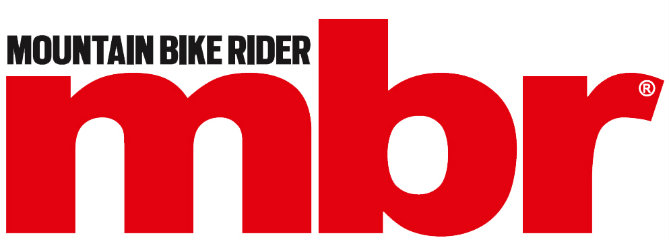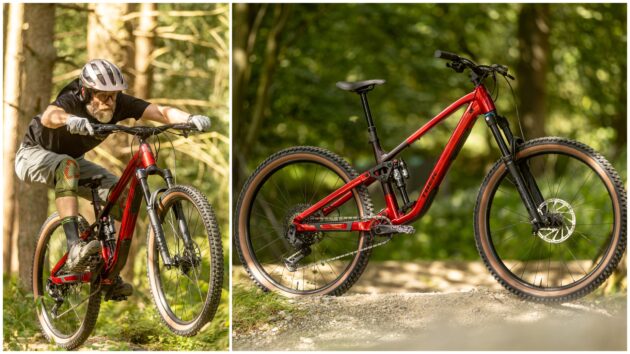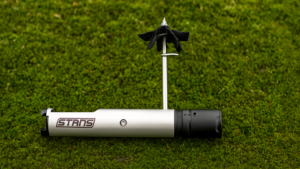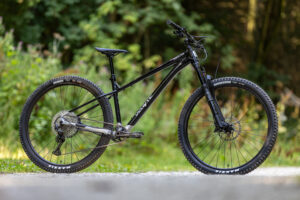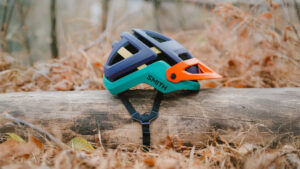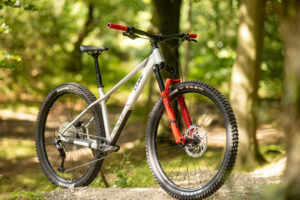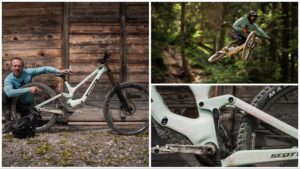I tested Trek's latest Fuel EX 8, it's stonking value and punches well above its considerable weight, but at 17kg it's overweight for a trail bike
Trek’s new alloy-framed Fuel 8 is over £1,000 cheaper than the outgoing model, and small changes help it rip even harder on the trails: but at 17kg it weighs nearly as much as some e-bikes
Mid travel trail bikes are theoretically the sweet spot of modern mountain biking, but the reality is that sales are stagnant in the sector if they don’t have a motor.
Did the impressively sorted ride and sublime suspension of Trek’s all new, multi personality Fuel stoke my fire for exercise biking? Or did its almost SL E-MTB weight make me wish I had the Trek Fuel plus ebike with TQ HPR60 motor instead?
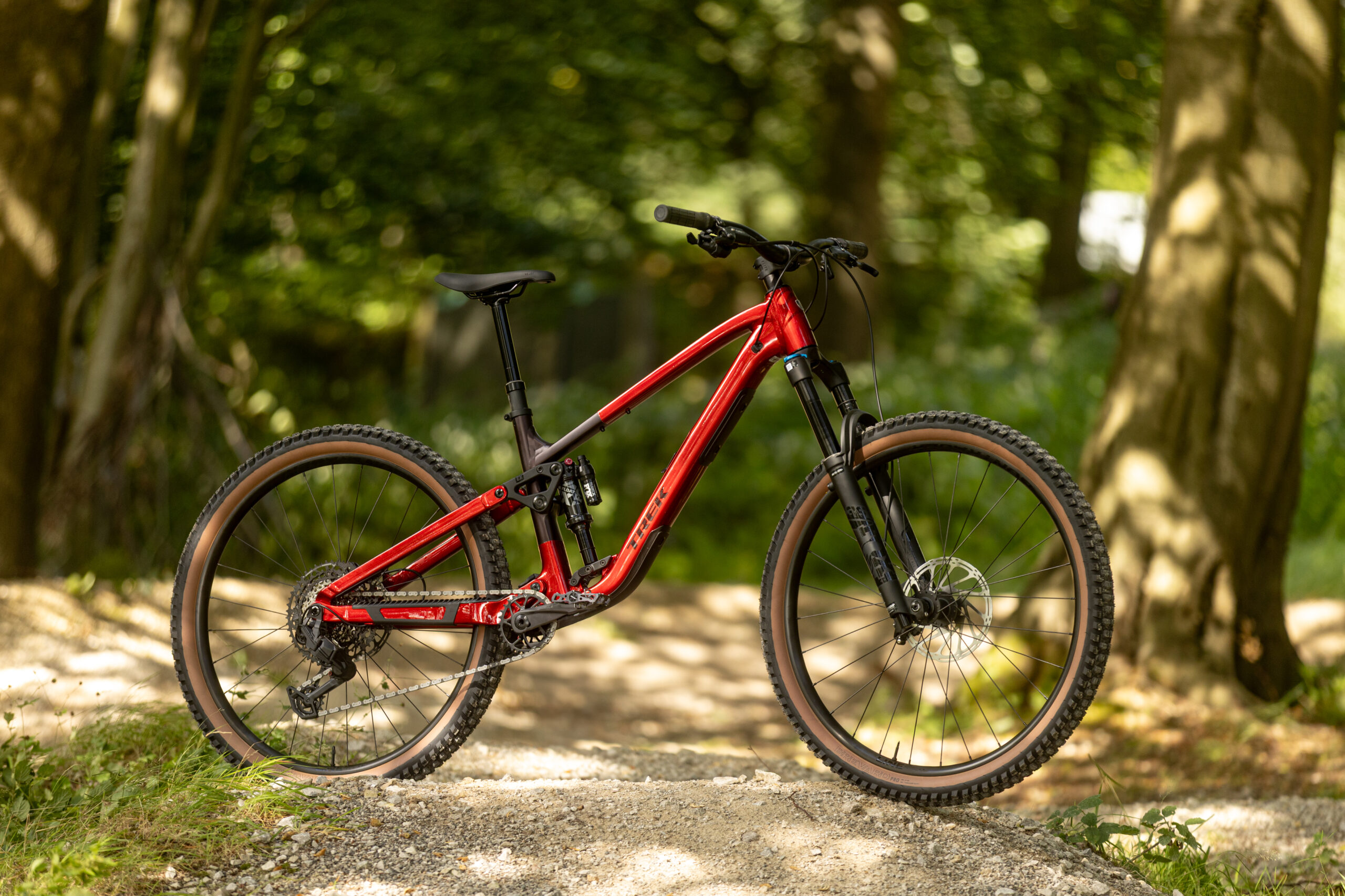
The new Fuel EX gets a much improved frame that can morph into an MX bike or 160mm travel enduro machine
Trek Fuel EX 8 need to know
- £1150 cheaper than Gen 6
- All new, lighter, smarter alloy frame
- Comes as a 145/150mm travel 29er, can become 150/160mm MX or 160/170mm LX
- New SRAM 70 T-Type wired transmission
- Fuel+ version with TQ 60 motor
– Short of time? Click here to skip to the verdict –
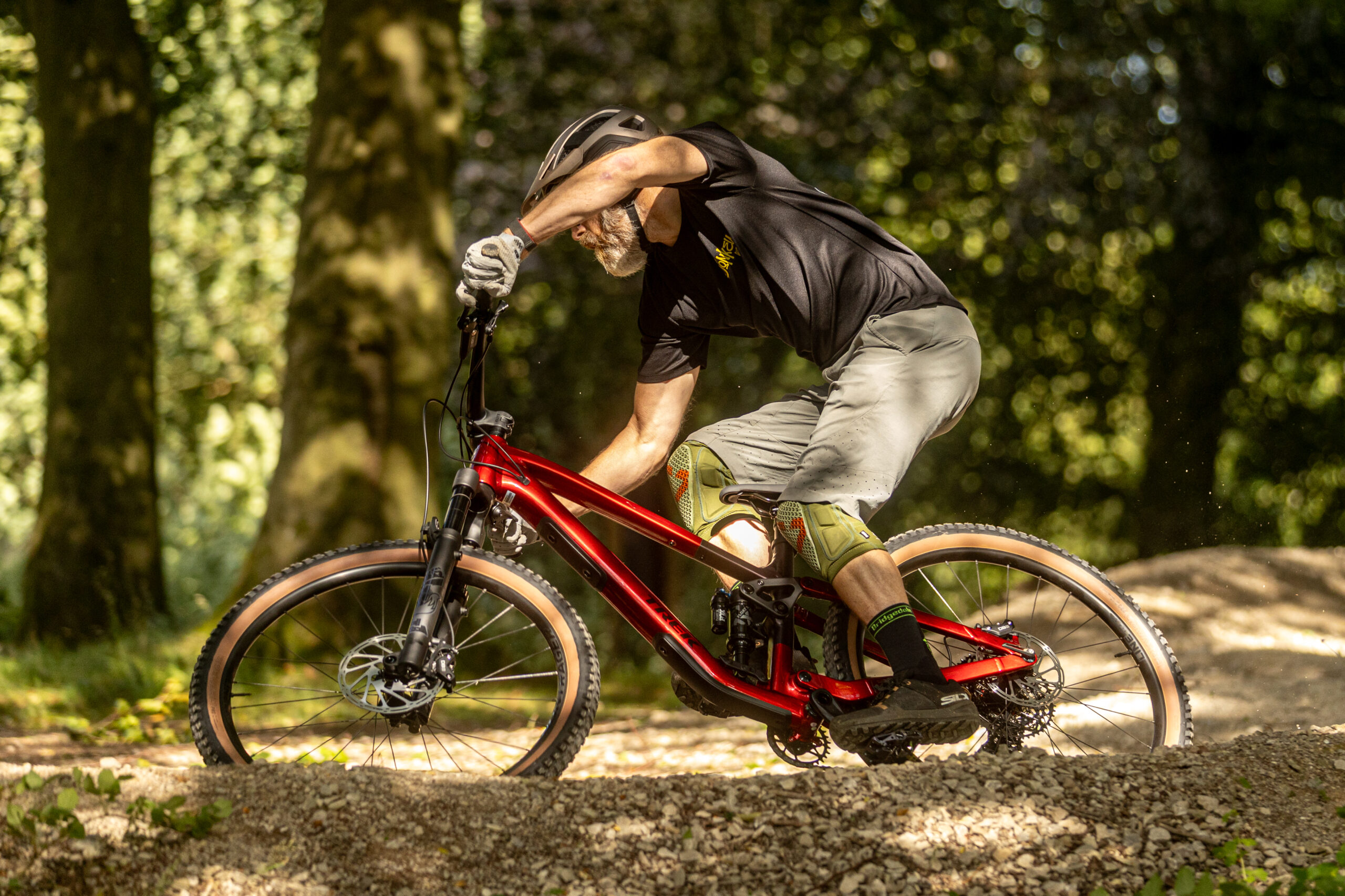
The straight seatpost means much better standover height on the new Fuel EX
Frame and geometry
The overall frame layout of the Trek’s trail suspension bikes hasn’t changed for well over twenty years, and that’s helped consistently make it one of the best mountain bikes going. There are small changes then, that remove some of the older bike’s painful foibles.
The straight (rather than kinked and spliced) seat tube means even medium sized bikes can take a 200mm dropper. Headtubes are also longer (140mm on the large) so you don’t have to add tons of spacers or a high ride bar to get decent stack. Standover is improved too yet there’s more room for big rear dampers. Rear wheel travel on the EX goes up 5mm to 145mm as a result while LX bikes use a 205 x 65mm coil shock. And the internal storage on the alloy frame is now a properly useful, easy access situation, not just an awkwardly tight token gesture.
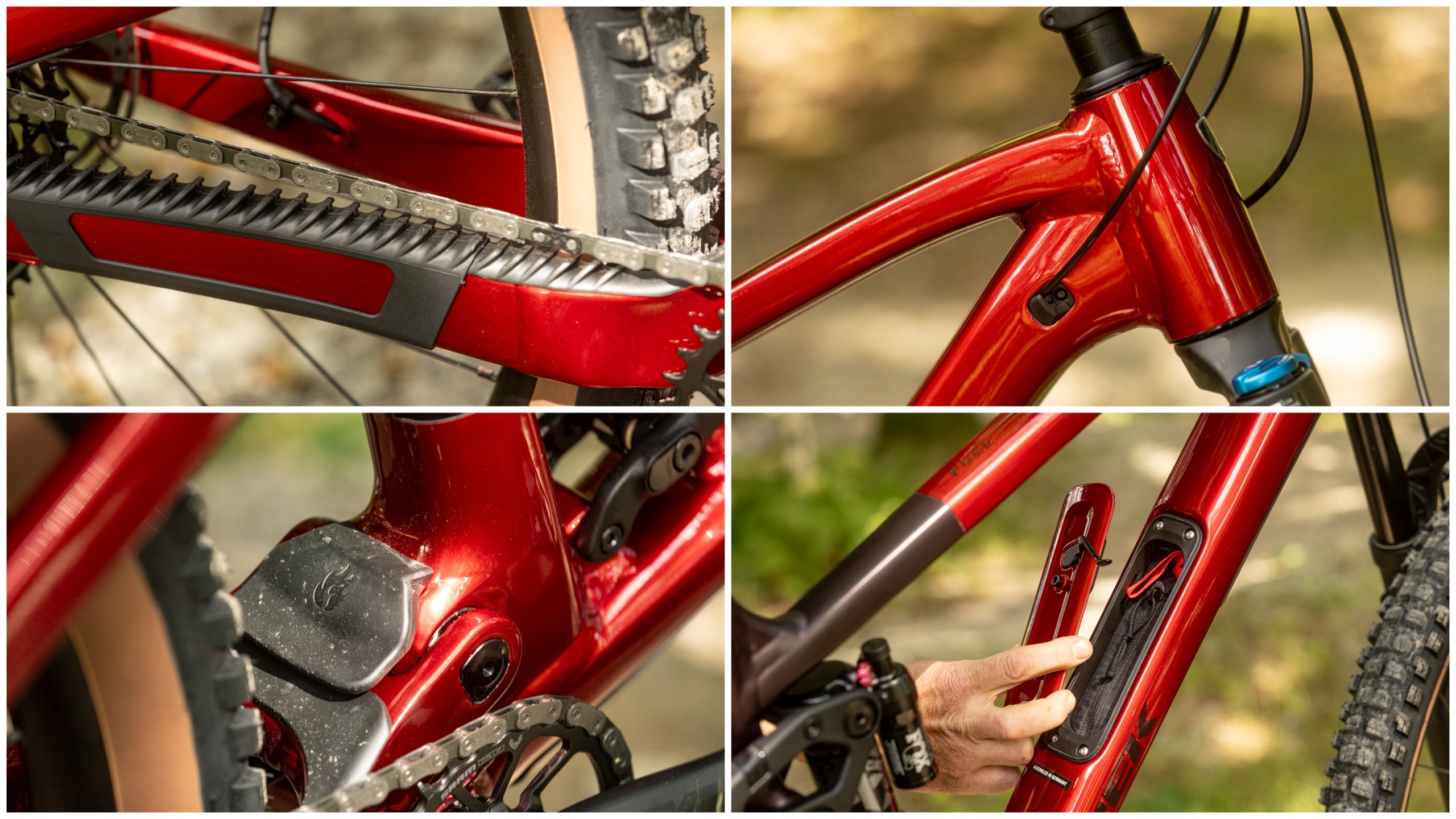
Chain clearance is now barely a millimetre, there’s new internal routing, a mudflap connecting the two triangles, and a bigger not-SWAT door
Cable routing is more secure and still doesn’t go anywhere near the headset. There’s replaceable belly and tailgate armour, overlapping flaps protecting the main pivot gap and a ribbed rubber chain stay protector. This is particularly important as the deep chain stay now sits higher for a more direct, stiffer and lighter connection to the rear wheel, meaning the chain can drag on it in the 10 tooth cog.
Some things haven’t changed though. Trek still uses its ABP (Active Braking Pivot) design that puts the rear axle through the middle of the chainstay/seatstay bearings. The rear axle handle pulls off to create a 4 and 5mm hex tool too.

It wouldn’t be Trek without ABP and that little tool hidden in the rear wheel QR
There are ISCG mounts on the screw in BB shell too and the lower shock mount has a flip chip to change progression from 20 to 25%. Trek doesn’t offer its own eccentric headset cups anymore though. Instead it’s moved to a ZX standard that lets you use an aftermarket angle adjust set if you want.
Trek has also removed its signature ‘Mino Link’ seat stay chip too, so adjusting for a 27.5in rear wheel ‘MX’ build now means buying new rocker linkages and a new lower shock mounts. Boosting travel to 160mm for the LX spec involves getting the new rocker mounts and potentially a longer 65mm stroke shock, although you can remove the travel puck in the current shock to get the extra 5mm.
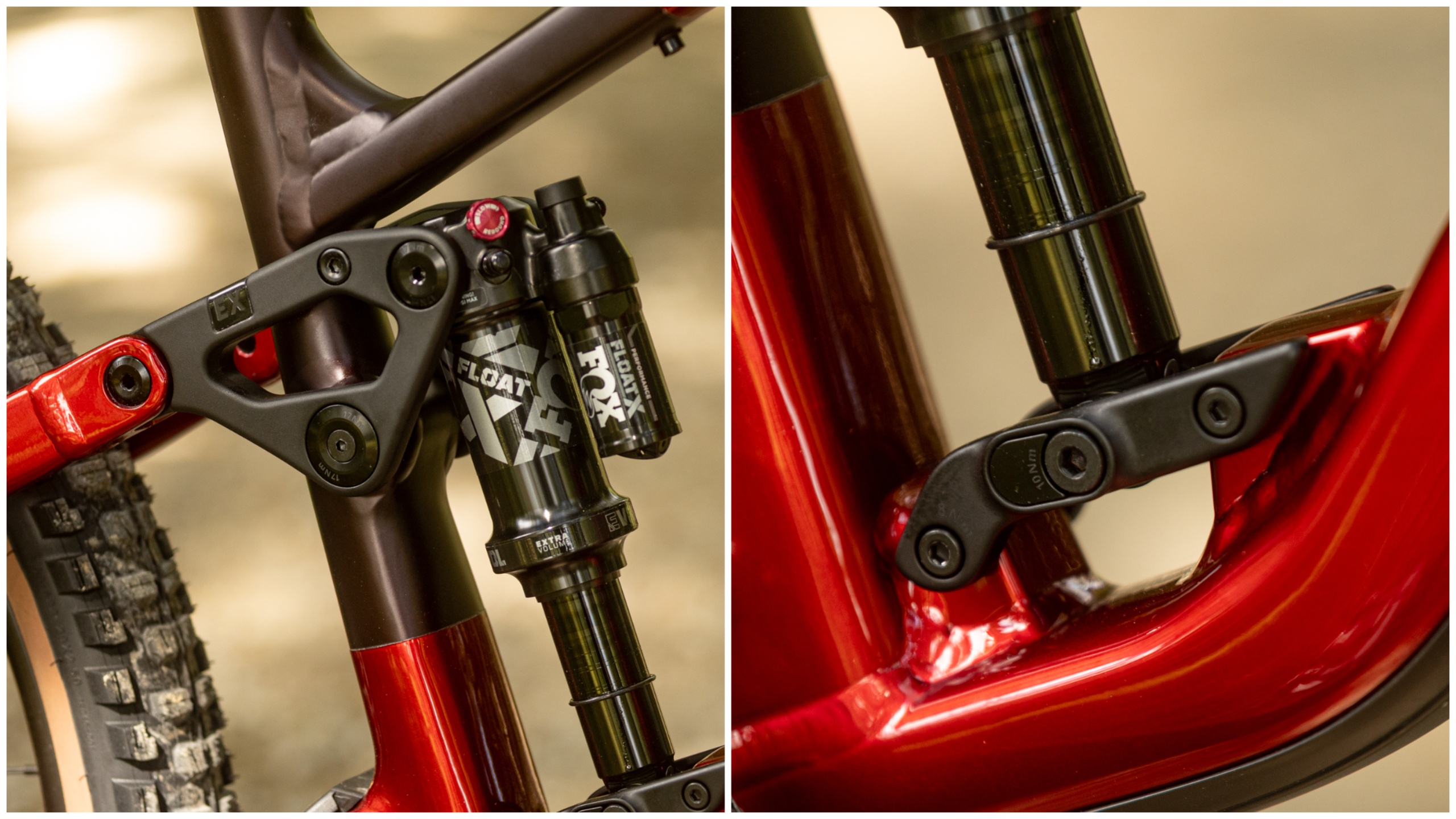
Swap the rocker link and lower link and you can mullet the bike… which is much more complicated than a simple flip chip
The logic of swapping whole parts rather than just flipping chips and swapping holes is to preserve most of the geometry across the three different versions. That said, the head angle does change from 64.5º with 150mm fork on the EX to 64.2º on the MX build with a 160mm fork, and on to 63.5º on the LX with a 170mm fork.
Otherwise reach is 485mm on the large I tested with a 338mm BB height giving a 35mm drop. Effective seat angle ranges from 78.6º to 76.2º depending on size with the large running 76.9º. Rear ends range from 437mm to 452mm, with the large at 447mm. The M/L size that’s long been a sweet spot fit for many riders – including me – is gone though as the shorter seat tubes allow more Venn overlap of the M and L sizes.
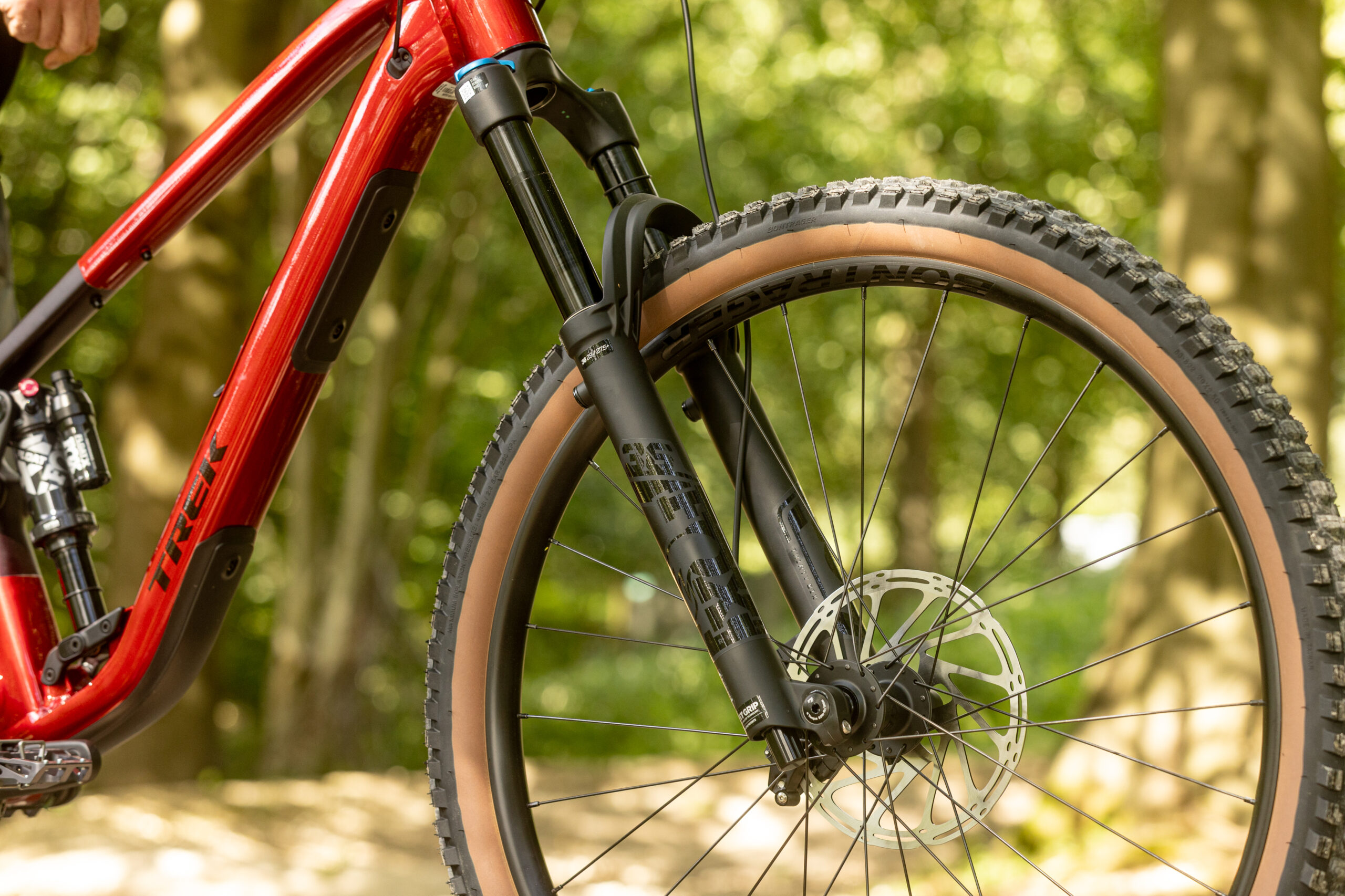
Fox Rhythm fork up front
Components
Most of the Fuel build is well proven mid range aggro kit. Fox 36 Rhythm fork, Fox Float X Performance shock, SRAM’s DB 8 mineral oil brakes, Race Face Turbine bars. And Trek’s own Bontrager Line TLR wheels, stem and 200mm stroke dropper in a robustly oversized 34.9mm girth.
While the Brevard Pro tyre name and vending machine tea-coloured sidewalls are new, the tread looks a lot like the previous Bontrager SE/XR 5.
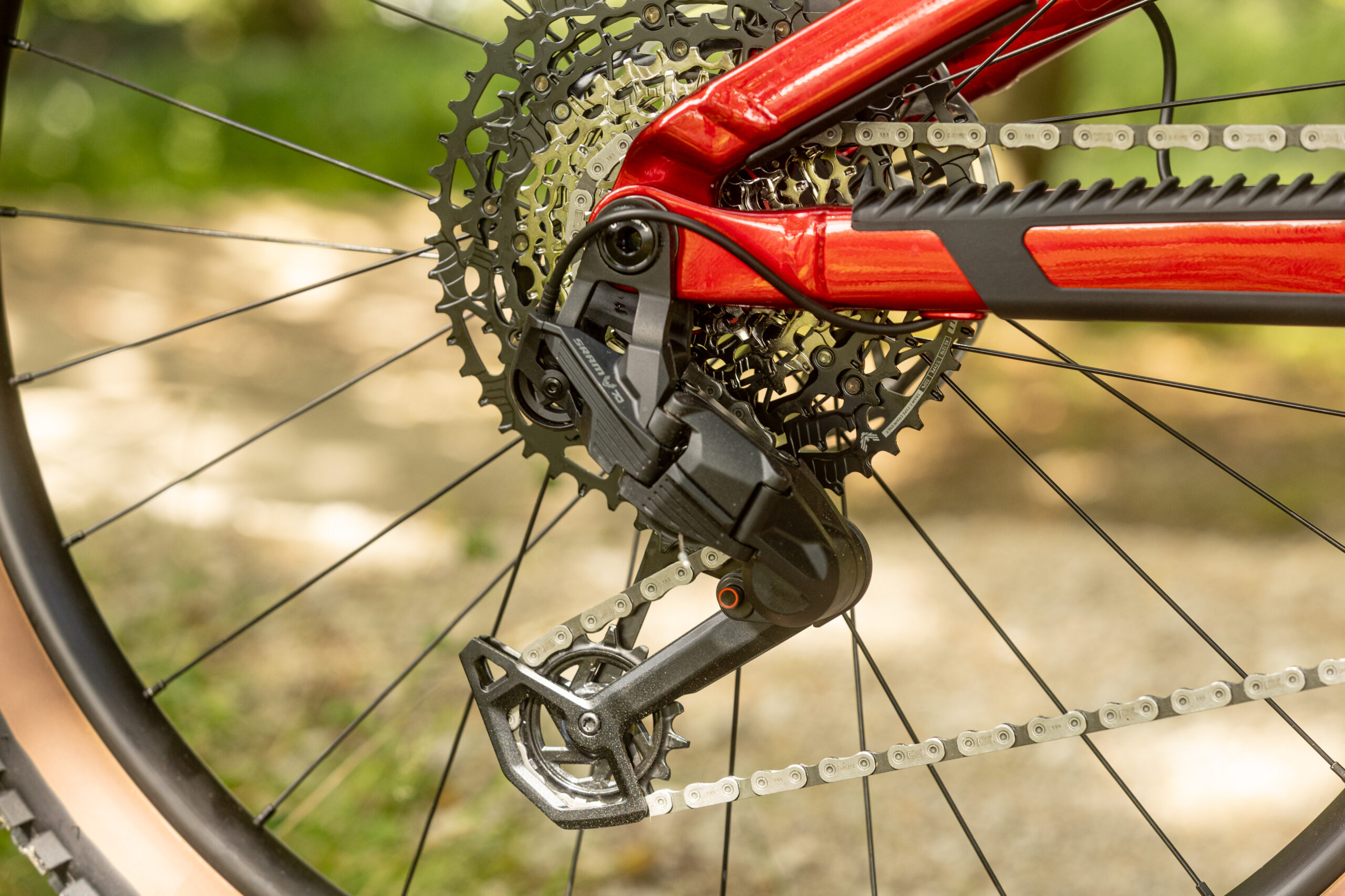
SRAM’s Eagle 70 Transmission is ideal on this bike
The new kid on the Fuel block though is SRAM’s Eagle 70 Transmission. Complete with rebuildable, UDH ‘Full Mount’ rear mech and slow but totally secure shifting cassette cog architecture.
However the chunky SRAM stop and go gear plus piggyback shock mean that despite the frame being slightly lighter than before at 4.6kg the whole bike weighs in at a very hefty 16.9kg without pedals. That’s 300g heavier than the Specialized Stumpjumper 15 Comp Alloy which has similar travel and geo but comes with an inline can, TRP brakes and Shimano gears. The Merida One Forty 700 is 800g though with similar spec and geo, plus the ability to upscale to 160mm.

Tipping it into the weekend, the Fuel EX is mighty composed in the turns
Climbing performance
Unsurprisingly, the weight was obvious under acceleration or when trying to claw up a climb, and burning up the singletrack soon burnt my legs too. The more I rode it though the more I got used to it and, in terms of traction and roll over on technical climbs, the Fuel is outstanding.
Yes there’s a lot of movement from the shock visually – especially out of the saddle – but it never feels soggy or bogged down. It just lets the wheel track super accurately up and over jank while applying torque consistently and mostly kick back free.
The ability to nail a totally accurate, guaranteed shift even at the lowest pedal revs and highest torque let me clean sections I was at the brink of cursing about several times during testing too. The Fuel also pedals efficiently enough I never even bothered with the ‘lock out’ switch on long fire road hauls. If you’re as keen on your climbing as much as your descending though then the lighter, shorter travel Top Fuel is the obvious pick from the Trek range.
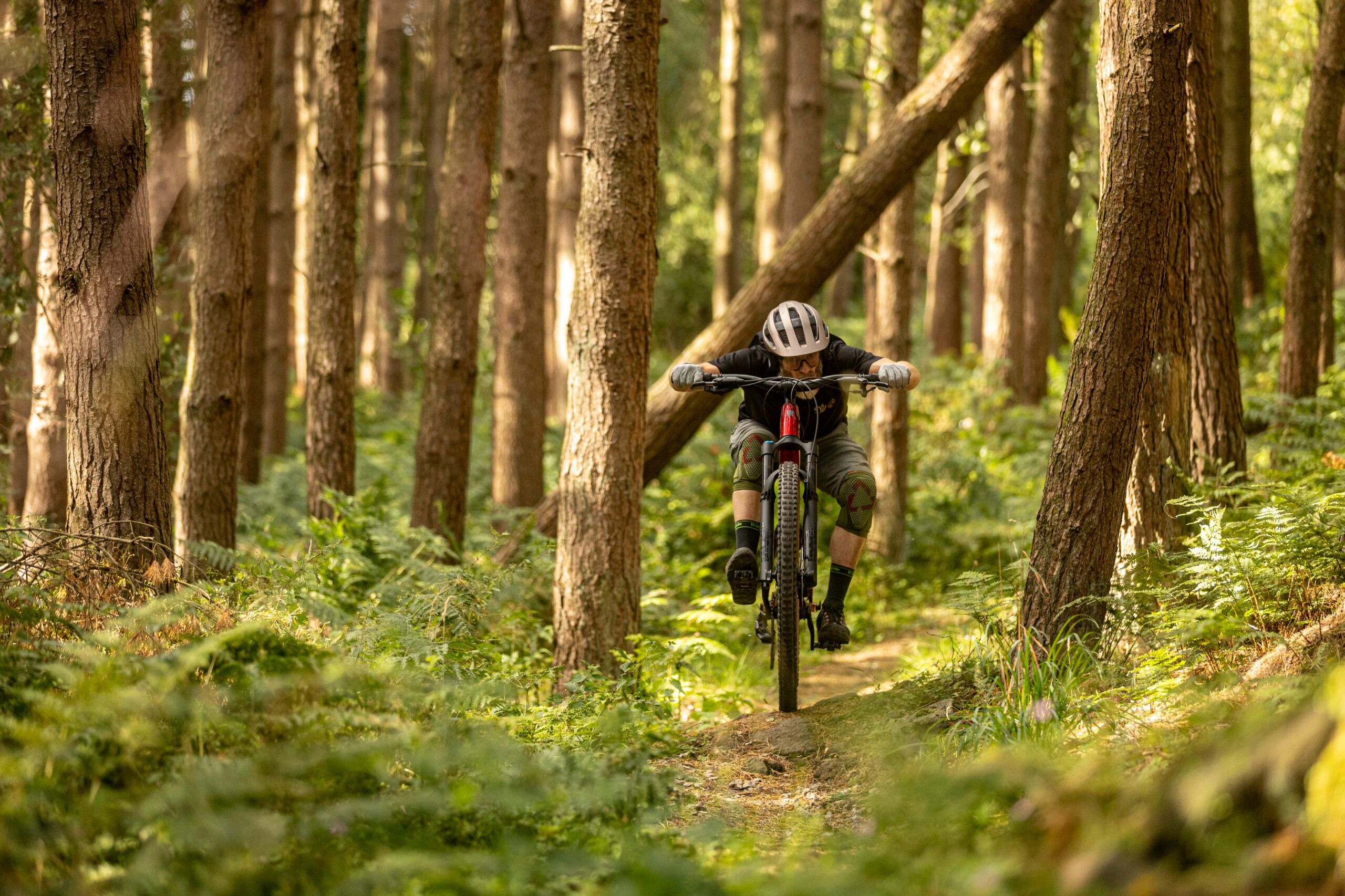
The Fuel EX has grown up some for 2026, it’s weightier for sure but that lends it huge composure
Descending performance
Just like Jackson Goldstone strapping two kilos of roofing lead onto his DH bike, the extra mass of the new Fuel gives it an unshakeably anchored feel on the trail. The open flow of the Fox 36 fork makes the most of that up front too, and while Fox’s Float X can feel baggy and gutless on some bikes it feels excellent on the Fuel.
Like the Top Fuel, a generous bottom out bumper means I struggled to get all the juice out of the 60mm stroke. Otherwise progression in the default 20% setting was pretty much a perfect sync with the air can. In fact, considering how butter smooth and consistently gripped it felt, I often finished descents surprised that the shock had only used around 60-70% of the stroke, saving the deeper dives for appropriately bigger hits.
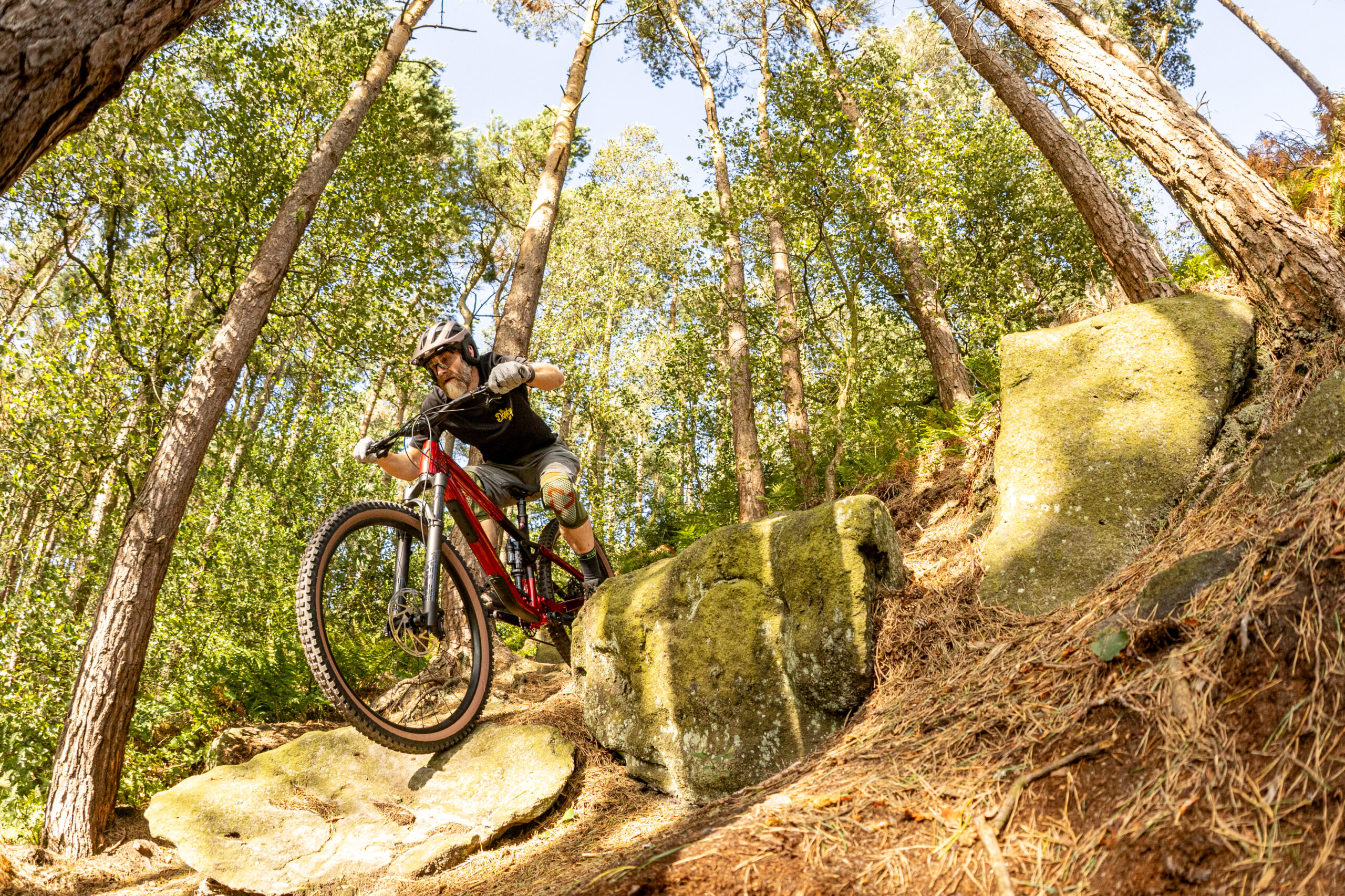
Steeper, techier trails are fine on a frame this good
The brake neutral behaviour of the ABP back end and a slightly flatter anti squat curve than on the previous gen bike keeps it noticeably more level than most bikes into, through and out of corners. There’s enough support to squeeze the tyres right to the edge of their adequate grip and then slide them sideways without drama if needed. The tall head tube and relatively low BB naturally coach you into a more centred, upright stance as well as keeping you bar side on the steepest roll ins.
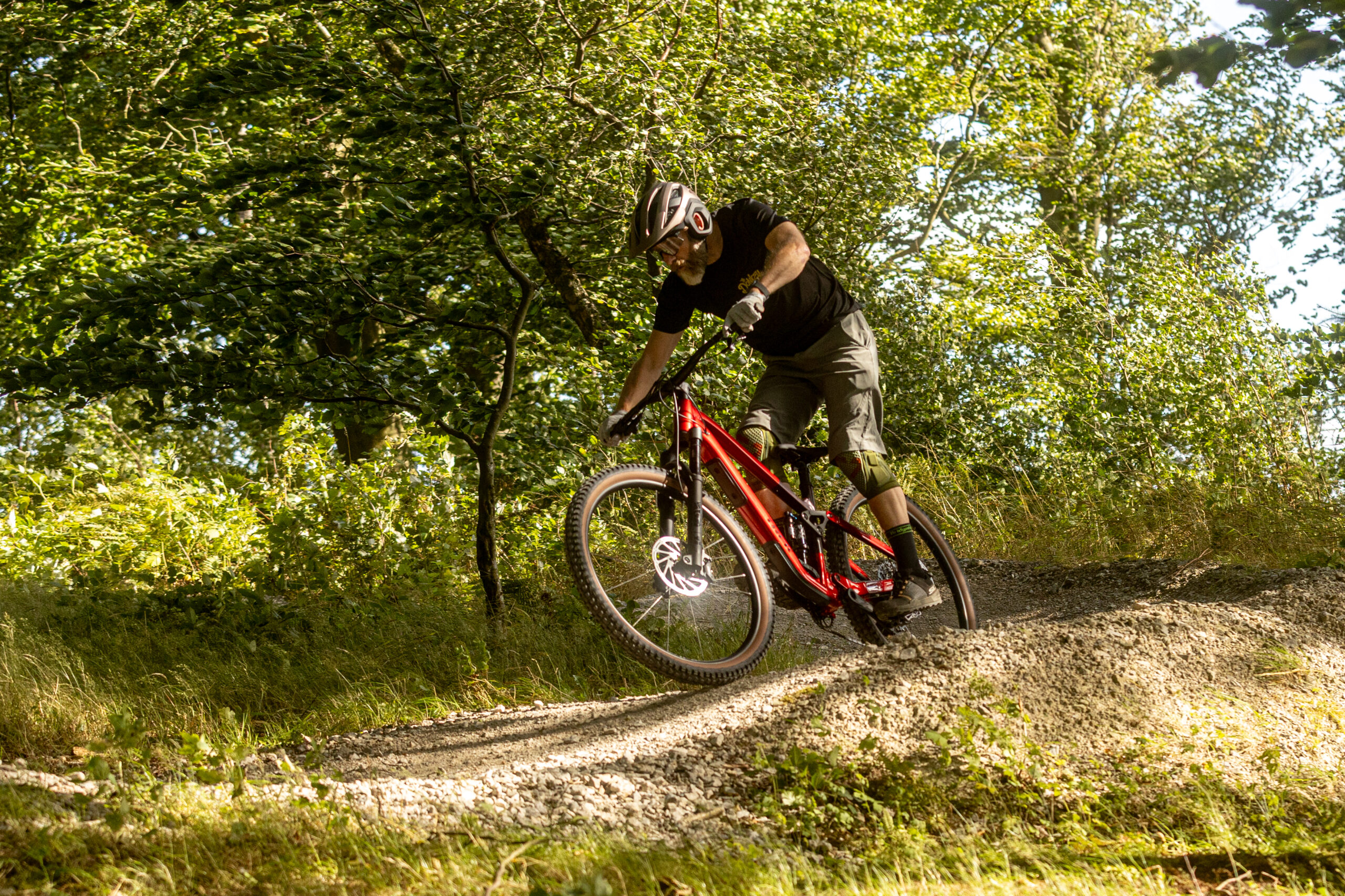
There’s support in the shock, but I didn’t have trouble getting all the travel
The only time the default set up bit back was when the back wheel buzzed my arse on really steep descents. The relatively long rear end and long wheelbase didn’t always fit comfortably through the tightest turns and the full sized wheels aren’t keen on flaring out either. That’s exactly the set of situations where switching to a smaller 27.5in rear wheel will be a win though.
While the suspension and dynamic balance is the immediate star of the show, the frame feel is stoically solid well beyond the grip limits of the tyres. That suggests it’s got enough strength and stiffness to not freak out in the LX format although I’ve not had a chance to try it yet. It’s worth noting that MX and LX builds only start at the Fox Factory / Shimano XT or RockShox Ultimate Eagle 90 ‘Fuel 9’ level though so £4925 and £5100 respectively.
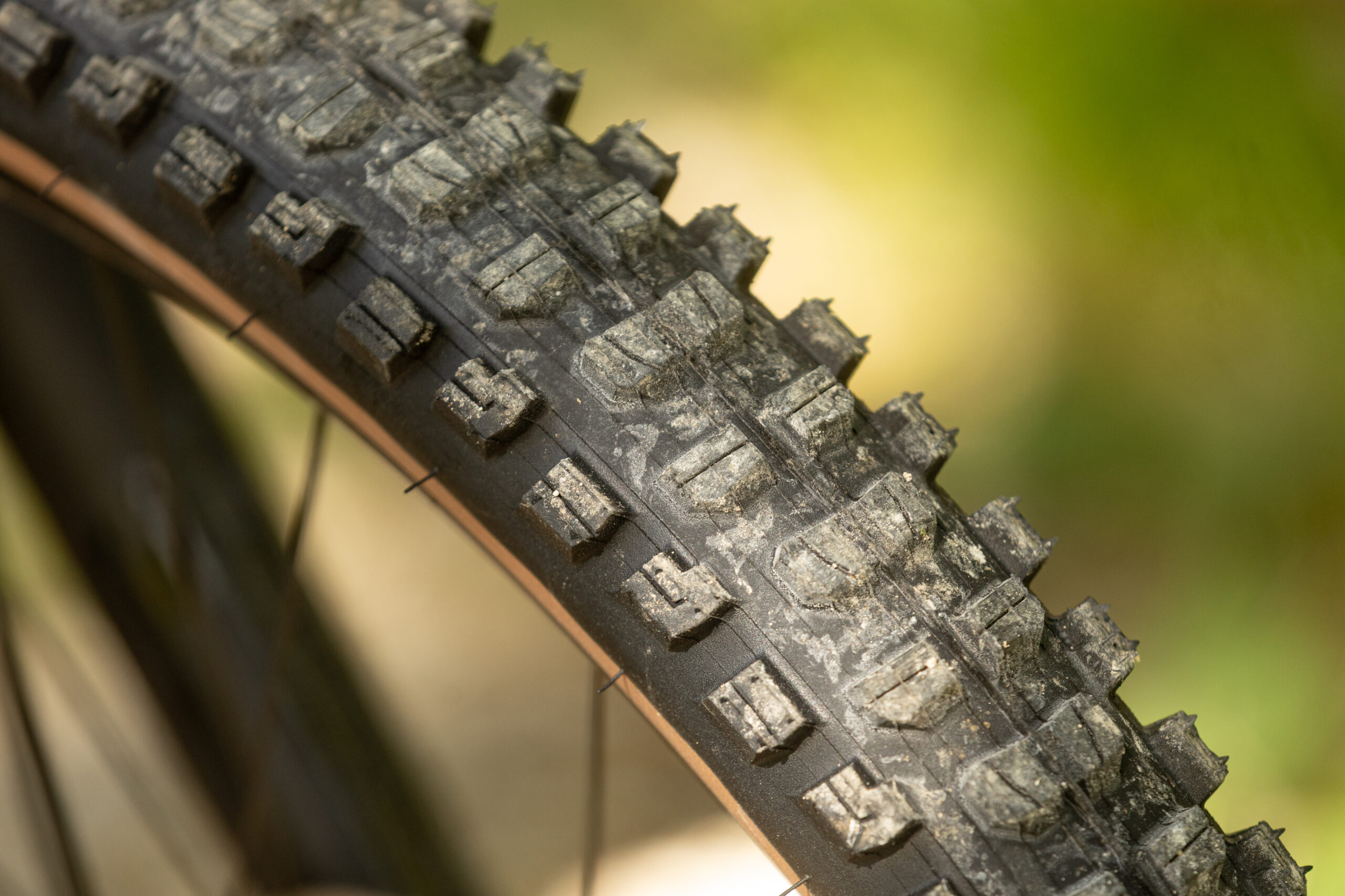
Ditch the Bontrager tyres and you’ll instantly see the Fuel EX’s full potential
Verdict
It would be easy to dismiss the frame changes on the new Gen 7 Fuel EX 8 as small tweaks or even a convenience back step in terms of MX wheel swapping. Each of those small ‘tweaks’ - whether it’s 5mm more travel, longer dropper capability, better storage, quieter cables and armouring, more accurate shifting under power - matter though. Both separately and cumulatively in terms of a quieter, more composed and more practical bike. While - again - it’s only subtle, Trek has made the already benchmark setting ABP suspension even smoother and more consistent even with base level dampers. The geometry changes put you in an even better position for making the most of the impeccable, dynamically composed handling of the Fuel too. The limits of the tyres were soon reached though, which is the only real ‘meh’ aspect, apart from the weight. The fact the improved Gen 7 bike comes in at £700 less than the reduced price of the Gen 6 completely exorcises the skeletons in the cupboard stock issue that’s haunted a lot of recent launches too. Being able to switch to MX and LX options potentially adds more value even if it involves extra hardware to make the wheel happen. Plus personally while I’m normally perfectly happy just throwing a smaller rear wheel in and sucking up the pedal taps and slacker seat angle in return for the Speedway slide gains, the geometry is so good on the Fuel I can see why Trek is being precious about preserving it. Despite being a die hard weight watcher I might even have to concede that even at a near e-bike weight it still rolls and climbs well. Plus the payback in terms of planted stance is definitely worth it for most modern riders who just get the ups done as comfortably as possible rather than using them as a fitness flex.

